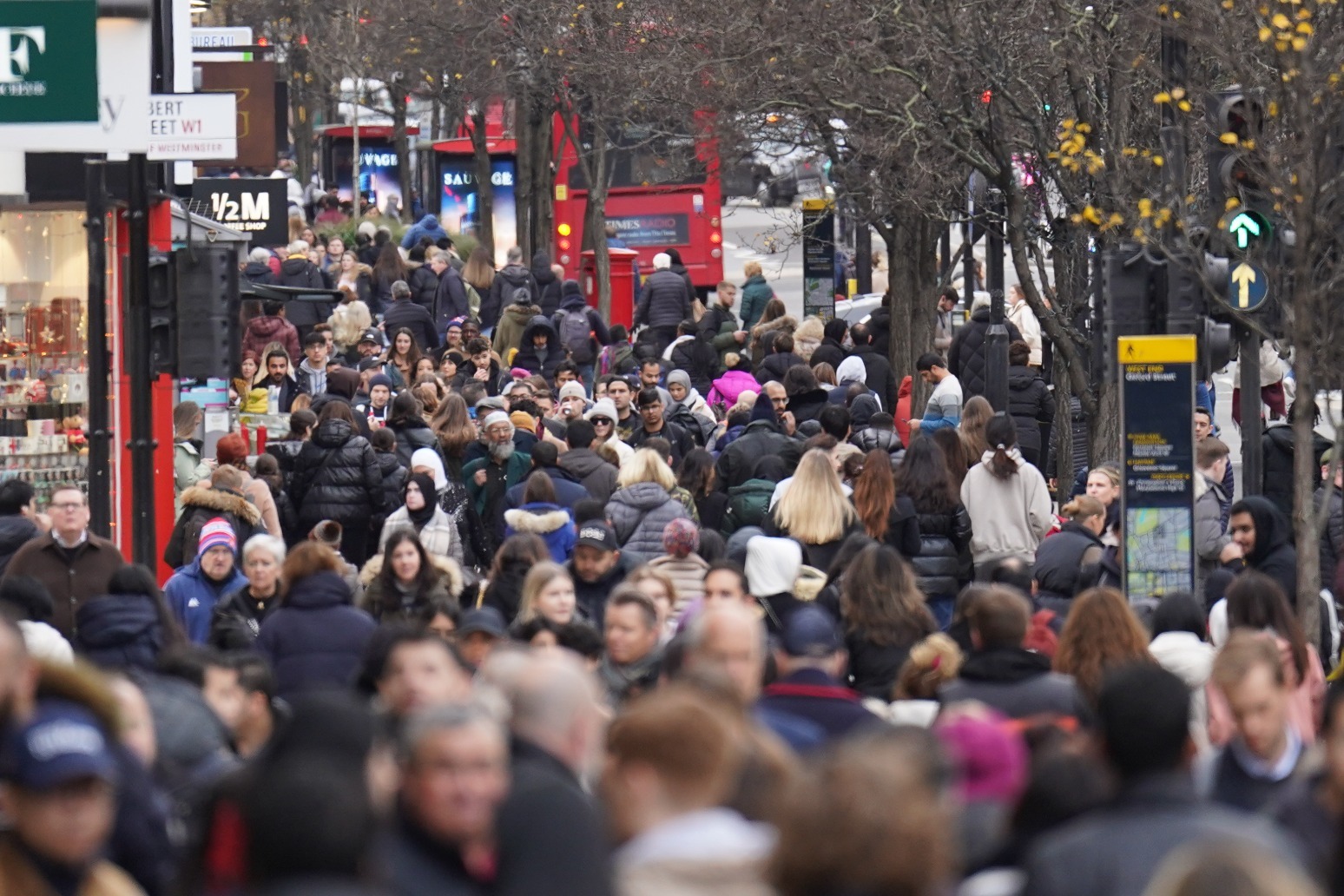
UK sees largest annual jump in estimated population size since 1971
The UK population has seen its largest annual increase in size since the early 1970s, new figures suggest.
Net international migration was the main contributor to the jump, while deaths outnumbered births for the first time – outside the Covid-19 pandemic – in nearly five decades.
The population is estimated to have risen by 1.0% in the year to June 2023, according to the Office for National Statistics (ONS).
This is the largest annual percentage increase since comparable data began in 1971, and follows a rise of 0.9% in the year to mid-2022.
Some 68,265,200 people were likely to have been resident in the UK in the middle of last year, up 662,400 from 67,602,800 12 months earlier.
This is also the biggest annual numerical increase since 1971.
Net international migration – the difference between the number of people arriving in the UK and leaving – is currently estimated at 677,300 for the year to mid-2023 and was the “main contributor to population increase for all four countries of the UK”, the ONS said.
There were an estimated 16,300 more deaths than births across the UK in the year to mid-2023.
With the exception of the Covid-19 pandemic year of 2020, this is the first time since the mid-1970s there has been a negative natural change in the population, with more deaths taking place than births.
Natural change was last negative in 1976 – though this is based on year-end data, rather than mid-year data used in the calculation of population estimates, the ONS added.
The UK population estimate for mid-2023 of nearly 68.3 million is up nearly two million on the figure five years earlier in mid-2018, which was just under 66.3 million.
Is it also more than four million higher than the figure of 64.1 million a decade earlier in mid-2013.
All estimates are likely to be revised within the next year as new data becomes available and improvements to estimates of international migration continue to be made, the ONS added.
Published: by Radio NewsHub